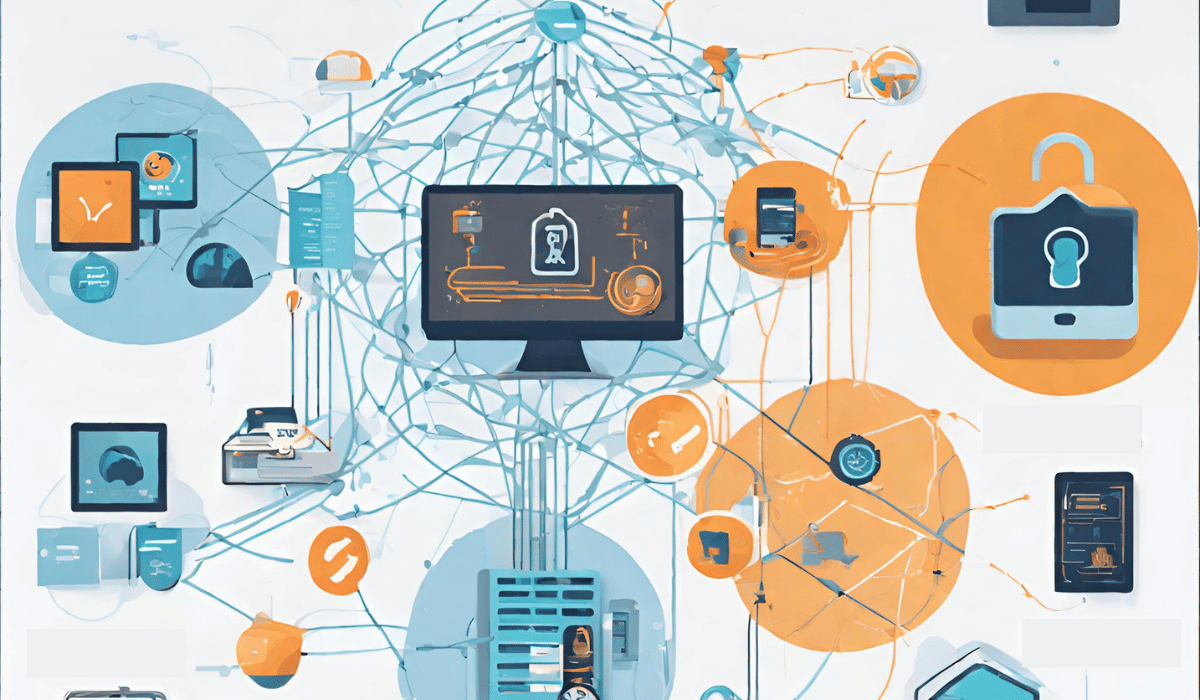Why Fiber Network Security Is Critical for Protecting Sensitive Data and Communications
Why Fiber Network Security Is Critical for Protecting Sensitive Data and Communications
Blog Article
Just How Information and Network Safety And Security Safeguards Versus Arising Cyber Risks
In an age marked by the fast development of cyber hazards, the importance of information and network safety has never ever been extra pronounced. As these risks end up being much more intricate, understanding the interplay in between information security and network defenses is important for mitigating dangers.
Comprehending Cyber Dangers

The ever-evolving nature of innovation continually presents new susceptabilities, making it essential for stakeholders to continue to be alert. Individuals might unknowingly come down with social design techniques, where opponents control them right into revealing delicate information. Organizations face distinct challenges, as cybercriminals often target them to make use of beneficial data or interrupt procedures.
Furthermore, the rise of the Web of Things (IoT) has increased the strike surface, as interconnected tools can offer as access factors for attackers. Recognizing the importance of durable cybersecurity techniques is critical for mitigating these dangers. By cultivating a comprehensive understanding of cyber organizations, individuals and hazards can apply reliable strategies to secure their electronic assets, ensuring durability in the face of an increasingly complex danger landscape.
Secret Parts of Data Security
Making sure data security needs a complex approach that incorporates various key elements. One basic element is information security, which changes delicate details right into an unreadable style, accessible only to authorized customers with the ideal decryption secrets. This offers as an important line of defense against unapproved access.
One more important component is gain access to control, which manages that can see or adjust data. By carrying out rigorous individual authentication protocols and role-based gain access to controls, companies can reduce the threat of insider threats and data breaches.

In addition, data concealing methods can be utilized to shield sensitive information while still permitting its use in non-production atmospheres, such as screening and growth. fft perimeter intrusion solutions.
Network Protection Approaches
Carrying out robust network safety and security strategies is necessary for securing an organization's digital framework. These methods entail a multi-layered approach that consists of both equipment and software remedies created to secure the honesty, privacy, and schedule of information.
One critical element of network protection is the release of firewall softwares, which work as an obstacle in between relied on interior networks and untrusted outside networks. Firewall programs can be hardware-based, software-based, or a mix of both, and they aid filter incoming you could try these out and outward bound traffic based on predefined protection rules.
Furthermore, breach detection and avoidance systems (IDPS) play an essential function in monitoring network web traffic for suspicious activities. These systems can alert managers to potential breaches and take action to mitigate dangers in real-time. Frequently updating and covering software program is also crucial, as susceptabilities can be manipulated by cybercriminals.
In addition, implementing Virtual Private Networks (VPNs) makes sure safe and secure remote accessibility, securing data sent over public networks. Last but not least, segmenting networks can reduce the strike surface and have potential violations, limiting their effect on the overall framework. By taking on these techniques, organizations can properly fortify their networks against arising cyber hazards.
Ideal Practices for Organizations
Establishing best practices for organizations is essential in browse around this site preserving a strong security posture. An extensive strategy to information and network safety starts with regular threat assessments to recognize susceptabilities and potential risks. Organizations needs to execute durable access controls, guaranteeing that only authorized employees can access sensitive data and systems. Multi-factor verification (MFA) ought to be a common demand to boost security layers.
In addition, continuous employee training and understanding programs are important. Staff members ought to be enlightened on identifying phishing efforts, social design methods, and the value of sticking to safety and security methods. Regular updates and patch administration for software program and systems are additionally important to protect against understood susceptabilities.
Organizations should examine and create case action plans to make certain preparedness for possible violations. This includes establishing clear interaction channels and roles throughout a safety event. Moreover, data security must be used both at remainder and in transportation to safeguard sensitive details.
Finally, carrying out routine audits and conformity checks will aid ensure adherence to appropriate guidelines and recognized policies - fft perimeter intrusion solutions. By adhering to these best methods, organizations can dramatically enhance their strength against arising cyber hazards and safeguard their vital assets
Future Trends in Cybersecurity
As organizations navigate an increasingly complex electronic landscape, the future of cybersecurity is poised to develop considerably, driven by shifting and emerging modern technologies risk standards. One prominent fad is the integration of man-made intelligence (AI) and equipment learning (ML) into safety and security structures, enabling real-time danger discovery and action automation. These technologies can examine large quantities of information to identify abnormalities and potential violations a lot more successfully than conventional techniques.
An additional crucial pattern is the increase of zero-trust design, which calls for continuous verification of individual find out this here identifications and gadget safety and security, no matter their place. This method decreases the risk of expert risks and improves protection against exterior attacks.
Moreover, the boosting fostering of cloud solutions necessitates durable cloud safety and security approaches that attend to special susceptabilities associated with cloud settings. As remote job becomes a permanent component, securing endpoints will also come to be critical, resulting in an elevated focus on endpoint detection and response (EDR) options.
Lastly, regulative conformity will certainly remain to form cybersecurity techniques, pushing organizations to adopt more rigid data defense procedures. Accepting these fads will be vital for organizations to fortify their defenses and navigate the evolving landscape of cyber hazards efficiently.
Final Thought
In verdict, the implementation of robust information and network safety and security steps is crucial for organizations to secure versus arising cyber dangers. By utilizing security, gain access to control, and reliable network safety strategies, organizations can significantly minimize susceptabilities and safeguard sensitive details.
In a period noted by the rapid advancement of cyber dangers, the value of data and network safety has never been more pronounced. As these hazards come to be a lot more complicated, recognizing the interaction between information safety and network defenses is important for minimizing dangers. Cyber dangers include a broad array of destructive activities intended at endangering the privacy, stability, and availability of data and networks. A detailed technique to data and network safety and security starts with normal risk assessments to identify susceptabilities and potential hazards.In conclusion, the implementation of robust data and network security measures is important for companies to protect against arising cyber threats.
Report this page